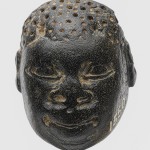The politics of the mûngîkî, by Grace N. Wamue
——————————————————————————–
Category Archives: Rastas
SESOSTRIS THE GREAT, THE EGYPTIAN HERCULES.
By Samuel David Ewing
Pg.225. “Eratosthenes ( ? ) ( From Syncellus ) App.II Fr. 39 King of Thebes 34. The thirty fourth King of Thebes was Sistosichermes, “Valiant Heracles,” ( Sistosis or Sesortosis, “Valiant Hermes or Heracles” ), for 55 years. Anno Mundi 3791.” From Manetho, With An English Translation By W.G. Waddell, published by Harvard University Press , London 1940, 1948.
Sesostris the Great’s name has been translated in various ways from the Greek, Roman, and English translations as Senusret I, Senwosret I, Sistosis, Sesortosis, Sesoothis, and Sen-Wos- Ret I. Sen-Wos-Ret means “son of Wosret.”
Wosret is the goddess who was known as a form of Hathor in Egypt. Wosret ruled over precious metals, wealth, mines, and treasures. The ancient black African ruler, Sen-Wos-Ret I knew Her to be his patron deity during his successful military campaigns, and she was the motivating ideal behind his mission to conquer the entire world.
With that in mind I will now list some of his accomplishments:
1. He used prisoners of war for an extensive building projects throughout Egypt.
2. He was worshiped as a living god during the 12th Dynasty of Egypt.
3. Sen-Wos- Ret I began a series of victorious military expeditions against the Asiatics, Libyans, and various nomads ( Bedouins ) who threatened the people of Egypt. He became ruler of Egypt in 1971 B.C. and ruled until 1928 B.C.
4. He enforced loyalty and discipline in Egypt, giving the governors responsibility for the management of the nomes ( towns ).
5. He was the first Egyptian king to rule over Ethiopia, including lower Nubia, and use its gold mines to add to the empires wealth.
6. Strabo, XVII reports that Sen-Wos-Ret I had built a canal starting from the Nile River to the Red Sea.
7. He ordered the rebuilding of the Temple of Amen at Ipet-sut ( Karnak ) in stone.
8. He erected red granite obelisks to be placed at Heliopolis ( Northern Anu ).
9. He led a great expedition to Punt on the Somali Coast.
10. He had built the largest pyramid in the history of the Middle Kingdom Period of Egypt’s history. The pyramid was 352 ft. tall.
11. He protected Egypt’s borders by winning victories in a succession of military conquests to the South to gain the benefits of the economic mechanisms in Lower Nubia and to continue trading with the nations of West Asia.
12. The ancient Greeks called him “Heracles Kharops” ( Heracles the Flashing-Eyed ), “Kekrops”, and “Sistosichermes Valiant Hercules.” He founded and built Athens, Greece, considered to be the greatest center of culture, academics, art, and the sciences in ancient Greece. This city is credited to being the catalyst for European – based civilization ( the West ) and originated with the black king Sen-Wos- Ret I known as Heracles Kharops.
13. He was the second ruler of the 12th Dynasty, he ruled for 34 years, and built 13 fortresses from Egypt to the Second Cataract. He made use of the harvest from Wadi Hammamat for food supplies.
14. He completed the construction of the Wall Of Princes. He founded colonies in the areas of the Danube River, the Black Sea, Strabo, Book III records that Sen-Wos- Ret I conquered Palestine, Syria, Mesopotamia, Armenia, Iberia, Colchis, and ancient Hindu writings record his invasion of India.
Numerous sources indicate that he was the first man to conquer the entire world centuries before Alexander the Great was born, that this has been a point of controversy among scholars and archaeologist, however evidence is being discovered that verifies the claims of ancient writers.
The Nigerian/Ethiopian Roots Of the Ancient Greeks
The Trials and Persecution of Mungiki – The Dread Warrior Lions of Kenya
Dr Rath Foundation On The Dangers Of Anti-Retrovirals For AIDs Patients
Imhotep and Medical Science – Africa’s Gift To the World
Ancient African Medicine, Egypt (Khemit) and the World
By Jide Uwechia
It is now official! The western propaganda press and its scholarly co-conspirators in the academia have finally admitted that African Kemit gave the world the gift of medical sciences as opposed to previously peddled lies which identify Greece as the origin of medicine. Imhotep, the Prince of Peace, the Egyptian inventor of medicine and healing was a real historical African genius who received the book of healing from the mysterious forces of ancestral Africa.
25th May: Africa Day
25th May: Africa Day
25th May is Africa Day, commemorating the date when the Organization of African Unity was set up in 1963. In July 2002, this organization was replaced by the African Union. 44 years on, what is the significance of Africa Day? Is it just another day, just another cause for the rich and powerful who use Africa to feather their own nests to make another pretty buck or has something actually been achieved?
Chavez and Danny Glover on Toussaint Louverture Film Project
The Wise Teachings of the Honourable Marcus Garvey
The Original Black African Arabs of Arabia Part 4 (The Black Stone, The Black Tribe of Koreysh, The Black Prophet By Ogu Eji Ofo Anu
The Black Stone, the Black Tribe of Koreysh, the Black Prophet
The Kaaba – the Black Stone
The Kaaba was a pagan shrine of great antiquity which housed the black stone, a meteorite that was probably brought by the Kushitic Black Arabs from Kushitic Ethiopia where such worship was routine. Pagan rites were routinely performed at the Kaaba in Mecca.

